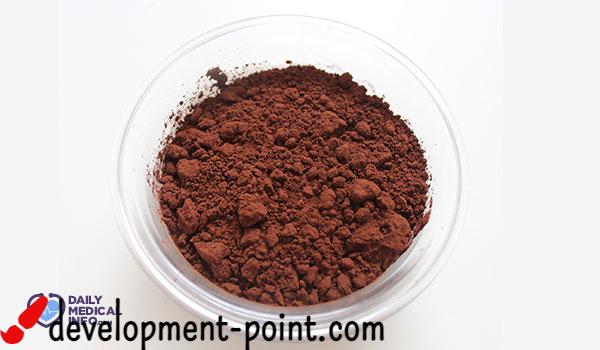Rice vinegar: benefits, uses and method of preparation
Rice vinegar has a sweet and sour taste at the same time. It is derived from rice after its fermentation process. It is commonly used in Asian countries, particularly in Japan, China, Korea and Vietnam. Because rice vinegar has less acidity than other types of vinegar, it is not suitable for preserving foods, but it is used in making sushi, salads, and meat dishes.
Nutritional value
A tablespoon of rice vinegar contains:
- 0 calories
- Almost a gram of protein
- Approximately a gram of fat
- Less than a gram of carbohydrates
- Less than a gram of fiber
- Less than a gram of sugar
One tablespoon of this vinegar also contains some important elements, such as:
- potassium
- magnesium
- phosphorous
- calcium
Benefits of rice vinegar
Rice vinegar has many health benefits, especially since it is calorie-free. Among its health benefits are:
1. Control your blood sugar
Adding vinegar in general to food controls the sudden rise in blood sugar. Eating a small amount of rice vinegar with a meal full of carbohydrates can help the body reduce insulin spikes.
2. Strengthening the heart muscle
The acetic acid in vinegar helps reduce cholesterol and triglyceride levels in the blood. Rice vinegar also has properties in fighting the formation of lipid peroxide in the human body, so it helps slow down the accumulation of cholesterol on the walls of blood vessels in the long run.
So adding this vinegar to your daily diet helps prevent the risks of heart disease, liver disease, and coronary artery disease.
3. It helps in losing weight
Eating two tablespoons daily of rice vinegar alongside the main meal helps in losing weight. This is because vinegar, in turn, contributes to reducing appetite and increasing the feeling of satiety. Eating it daily helps in losing weight gradually over time.
4. Promote digestive health
The acetic acid in rice vinegar, also known as acetic acid, helps promote a healthy digestive system, by helping the body absorb as much important nutrients as possible, such as calcium, potassium, and essential vitamins, from the foods we eat.
5. Strengthening the immune system
Rice vinegar contains essential amino acids that contribute to strengthening immunity against free radical damage.
6. Prevention of high blood pressure
Rice vinegar is calorie-free and sodium-free, so it has a less acidic and salty taste compared to other types of vinegar.
As eating too much sodium in food increases the risk of high blood pressure. Reducing it helps prevent it by eating foods that have a low sodium content, such as rice vinegar.
7. Rich in antioxidants
Because rice by itself is rich in antioxidants, vitamin E, protein, and phenolic compounds. Rice vinegar also has the same properties. The phenolic compounds in this vinegar also help protect the body from risks such as cancer, heart disease, osteoporosis, and diabetes.
8. Increase energy in the body
The amino acids present in this vinegar can help the body fight fatigue and exhaustion. Eating it daily contributes to giving the body the energy it needs to complete its activity.
Rice vinegar uses
Rice vinegar has many uses in food and more Among these uses are:
- Salad dishes
This vinegar is used to enhance flavor in salad dishes and add more benefits to them.
You can use it to season food such as meat or vegetables, as it has a sweet and sour taste, unlike other types of vinegar.
- Preparing sushi dishes
This vinegar is one of the main ingredients in how to make sushi.
Like all types of vinegar, this vinegar can be used as a natural cleaner for vegetables when washing them, or even to clean the house and sterilize it from viruses and bacteria.
How to make rice vinegar at home
You can make rice vinegar at home By following these steps:
- In a large bowl, put the rice and an appropriate amount of water enough to cover it, and leave it to soak for 4 hours in a dry place, while keeping the bowl covered with a cloth to block the air.
- After four hours, filter the rice and keep only the water inside the bowl in the fridge overnight.
- The next day, add white sugar to the rice water, provided that the ratio for each cup of rice water is a cup to a quarter of white sugar.
- Stir the sugar into the rice water until it is completely dissolved.
- In a pot on the stove, cook the rice water mixture with added sugar for 20 minutes.
- Remove the pot from the heat and let it cool completely, then transfer the mixture to a glass bowl.
- Add the yeast to the rice water mixture, provided that the ratio for every 4 cups of rice water mixture to which sugar has been added is a quarter of a tablespoon of yeast. Mix them well.
- Leave the mixture to ferment in a dry place for 7 days.
- Observe the mixture from time to time. Once the bubbles disappear in the mixture, it is a sign of complete fermentation.
- After a week has passed, the bubbles have disappeared. Cook the mixture on the fire for 20 minutes.
- You may find the mixture cloudy, you can clean it up by adding a very small amount of egg white.
The ratio of egg whites added to get rid of the cloudiness is two egg whites for every 40 cups of the rice-water mixture. - Cook the mixture again after adding the egg whites for another 20 minutes.
Now the rice vinegar is ready to use.
Substitute for rice vinegar
If this vinegar is not available, you have some other options to replace it such as:

